By Dan Weisz
One morning this week I went to Madera Canyon with Jeff Babson looking for butterflies. Jeff works for the Pima County Department of Natural Resources as the county’s Wildlife Viewing Program Specialist. He also owns Sky Island Tours which offered this butterfly walk. Although we do have butterflies in Tucson year round, this is the season where many species appear again. We mostly walked along the Proctor Road trail, at the mouth of Madera Canyon at about 4000 foot elevation. The butterflies we saw can be found at the same elevations in the Catalinas and other local mountain ranges because the of the presence host plants for the butterflies’ caterpillar. Enjoy the variety of color and shape:
The Orange Skipperling looks like a rocket ship with its wings partly folded. Their wingspan is barely one inch.
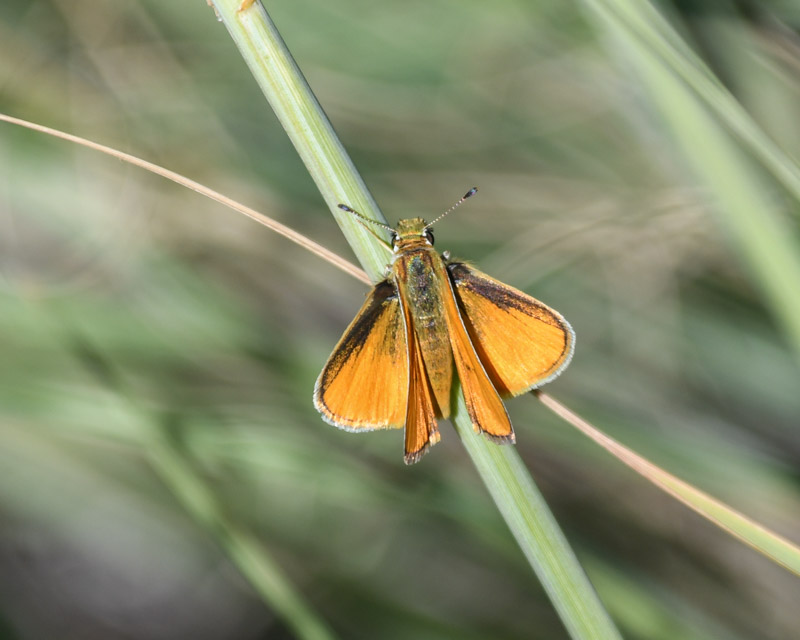
Checkered White butterflies feed on mustard plants. This one was just resting for the moment.
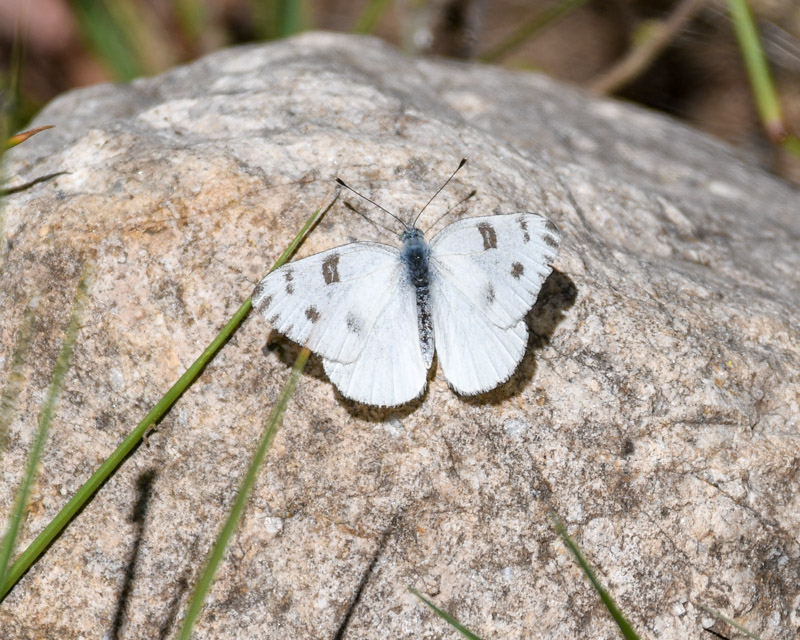
Empress Leilia butterflies are found whereever desert hackberry bushes are. These butterflies will pick a spot on the ground to perch and then will defend that spot from intruders, returning to the same spot over and over again.
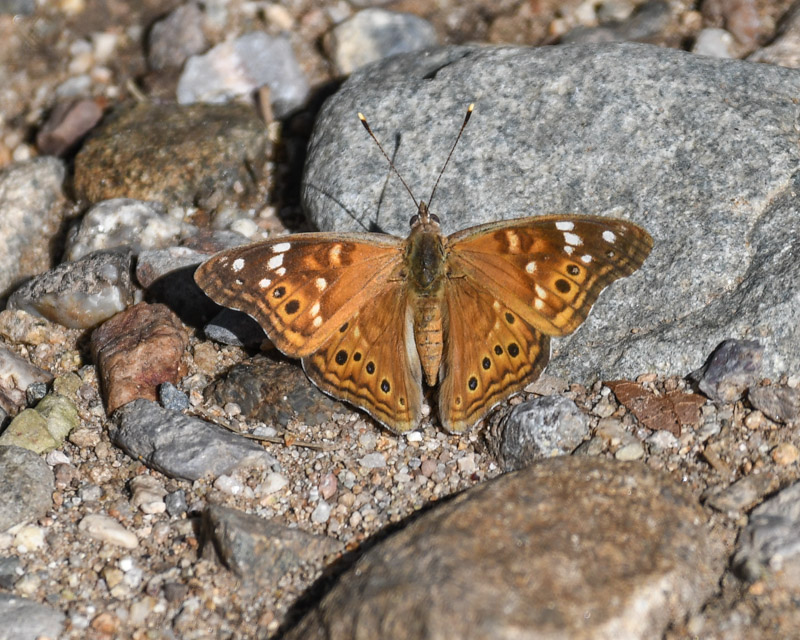
Elada Checkerspot butterflies remain close to the ground. They are small and love chuparosa and desert honeysuckle plants.
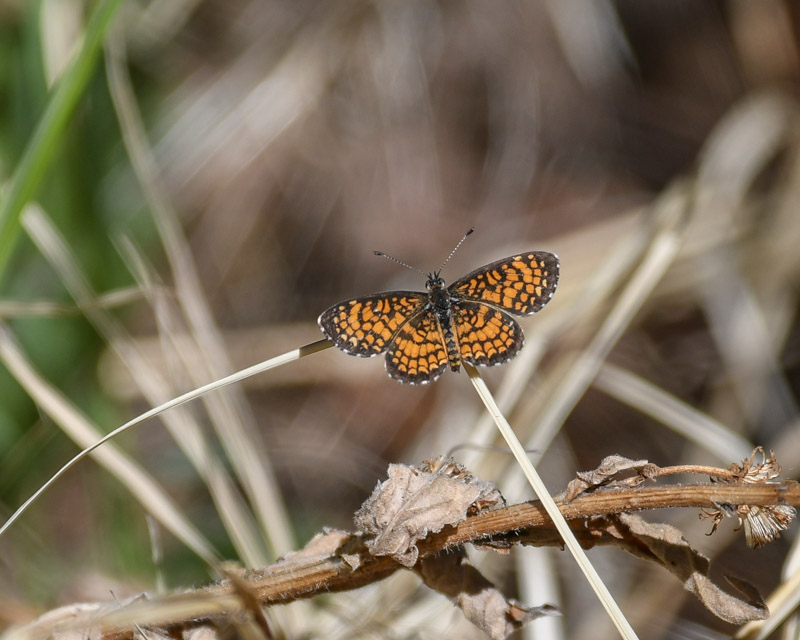
The Acmon Blue is a member of the “blue” butterfly group. Usually their blue upper wings are apparent during flight but not when they close their wings while on the ground. This one left its wings open for us to get a peek at the brilliant blue and the orange line on the bottom of the wings. The blues are very small butterflies with wingspans of about an inch.
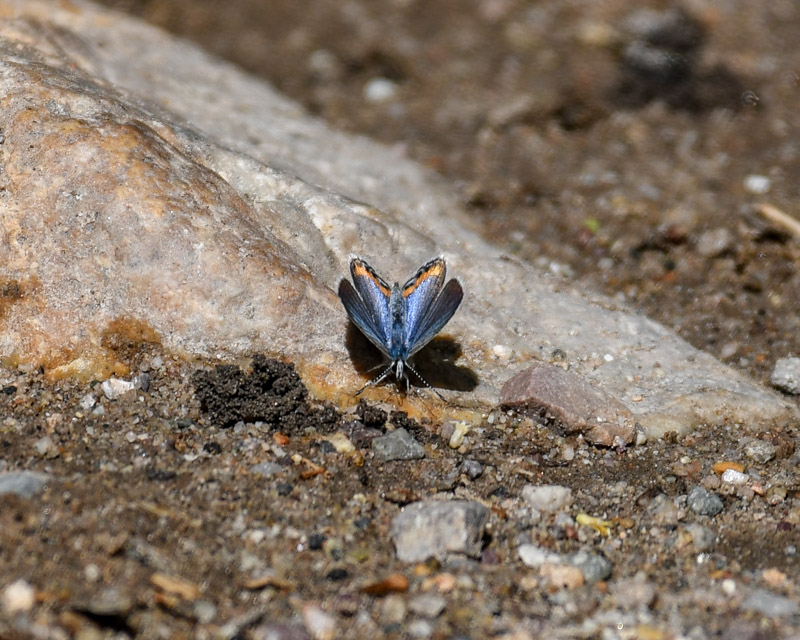
The Golden-Headed Scallopwing is a small black butterfly with a head that looks like it is powdered in gold. There were ants on the moist ground near the creek that kept on interacting with the small butterflies, causing them to fly away briefly over and over again.
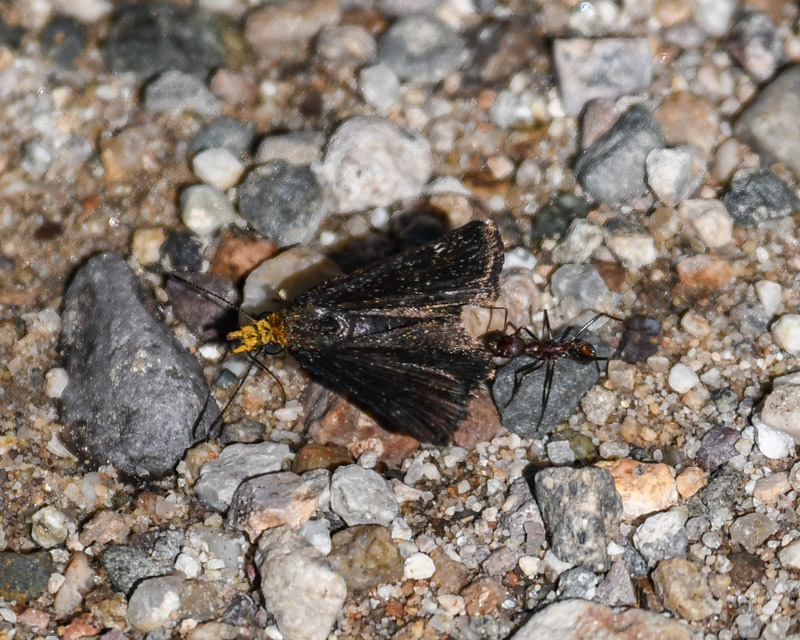
Another common member of the “blue” family is the Marine Blue, seen here on a mesquite flower. Mesquite is the host plant for the Marine Blue’s caterpillar. You can see clouds of Marine Blues gathered together in damp spots taking water and mineral salts. With its wings folded while at rest, the blue of the upper-wing remains hidden.
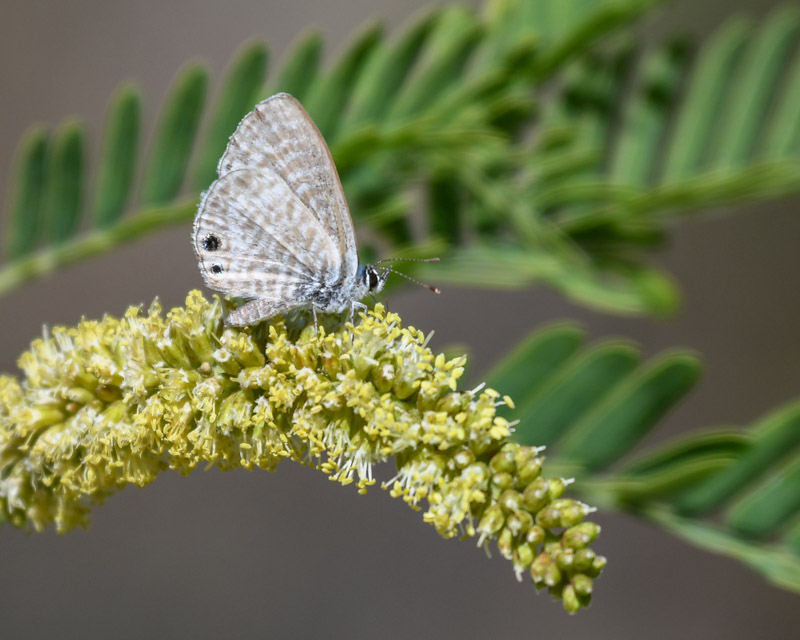
The Common Buckeye is a larger butterfly, up to three inches wide. The eyespots are very noticeable. These butterflies can be most commonly seen in riparian areas.
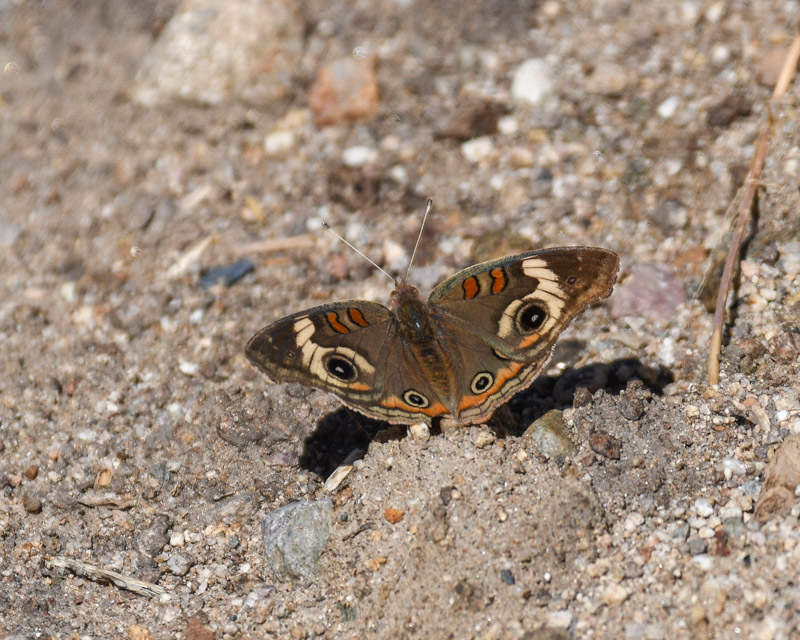
This Great Purple Hairstreak was, I think, the prettiest butterfly of the morning but one with a sad story. As you can see from the colors below, it is very spectacular looking. But we quickly realized that we were seeing the upperwing of this butterfly and it only had one wing!!! The right side wing was missing. It didn’t appear that the wing had been torn off by a predator, so this was probably a birth defect of some kind. This butterfly had probably just emerged from its chrysalis and would not likely have a long life. Mistletoe is the larval host plant for this butterfly and the adults like Catclaw Acacia as a nectar source.
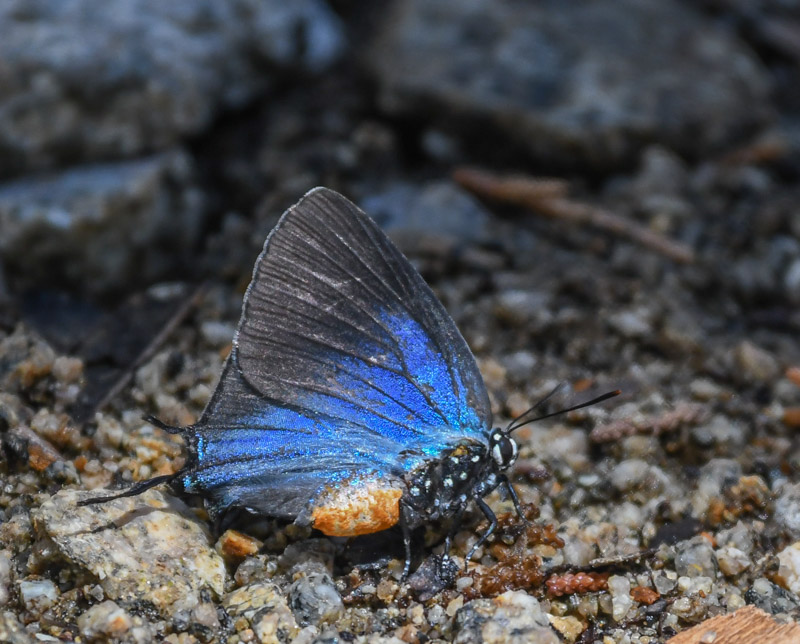
Here is the equally pretty underwing of that Great Purple Hairstreak. Notice the two ‘tails’ of this butterfly.
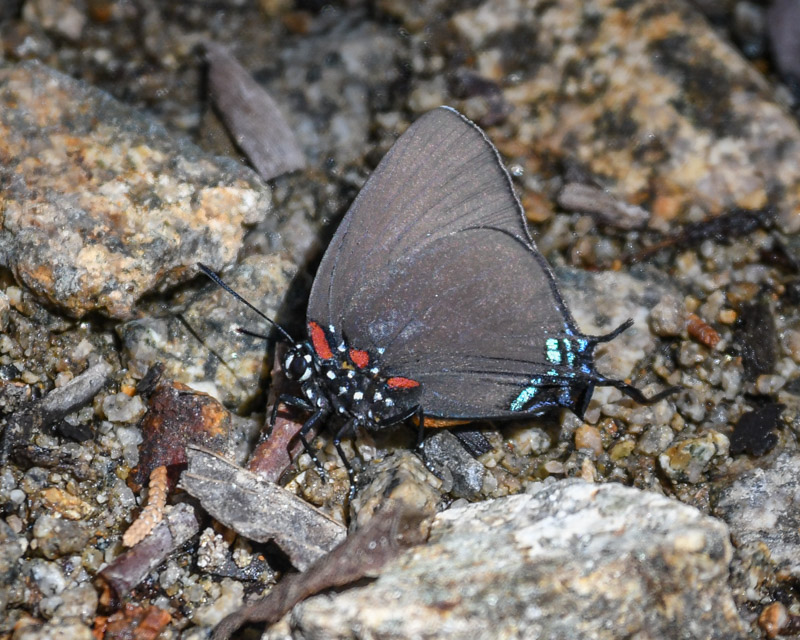
And finally, we saw a butterfly that is all over Tucson- a Queen. These butterflies are often mistaken for Monarchs and they are a smaller, darker relative of the Monarch. Queen butterflies do not migrate and are a year-round resident of our desert. If you want Queen Butterflies in your yard, plant milkweed and the butterflies will arrive within days!
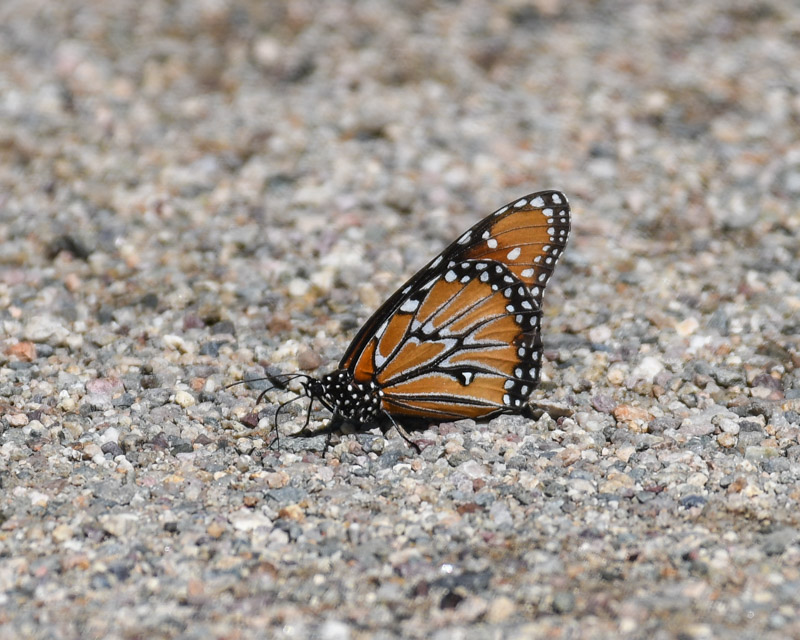
Thank you for a good morning Jeff!
